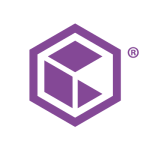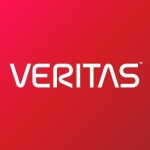What is our primary use case?
For various customers, Micro Focus Data Protector was used for backup and restore.
As a technology consultant, I used to deliver projects, and we used to have some concerns about the previous version versus the latest version. Based on that, we had our release going through on these products, which we overcame, and we even succeeded in getting upgraded from the older versions to the latest versions.
Customers wanted to upgrade from the previous version to the latest version, either on a Windows platform or on a Linux platform as well. They used to have multi-vendor storage boxes as well, and they wanted to know if it was compatible with this new version.
They occasionally had an older version or older storage boxes that were incompatible. Based on that, we simply had the most recent support methods and shared them.
They were attempting to access the new storage, and we tried to find where they were stuck to support those issues.
What is most valuable?
The most valuable features of this solution were the features we worked most with which were telemetry, and the scheduler. We just had to onboard where we only had a few basic terms.
Most features we worked on were on a web console, but they still lack almost all of the features.
The other route was where they just wanted to learn more about cloud storage and where they wanted to go to applications, auto applications from local storage to cloud, but we couldn't give them the solutions because we didn't have certain enough features, facilities, in our lab environment where we could just work out our good R&D, and so on. But we failed in that situation because we were not given these solutions. That is something we could have done.
What needs improvement?
We have so many specific technological cracks in Micro Focus, but we are not getting the features, facilities, or coordination between the global delivery centers and the R&D team that we need to express our ideas.
If they can overtake these, either they can go through R&Ds or they can allow us to go through R&Ds it would be helpful. Because we couldn't find certain lab environments where we could just try to succeed in those environments because we can't always go test in the customer environment.
When a technology consultant provides an idea, it is because they have just gone through the customer environment, they have gone through the lock and et cetera, they are well versed with those, and all they need now are some solutions. However, if I need to work with R&Ds, we don't have those solution architects who can help us manage, test, and implement those environments.
That is where we fall short. We couldn't find an environment where we could simply try to go through testing and then implement it in the customer locations.
DP is a very user-friendly product, and we are transitioning to a web-based environment. It works because we don't have to go through a platform that is dependent on each cell manager individually. Rather, we can try to create a platform-independent solution, such as a portal that can be accessed from anywhere.
That is one option where I can work out in more central environments where I can just try to manage. We have a number of features where if we find a web portal and a good tool managing the number of devices and even just trying to configure along with a centralized medium and database, CMDB, we have a number of features. We have a very good feature going through centralizing media management, centralizing cell managers, and then working on a centralized media where we can just try to manage them to a cloud, which works very well because it is a centralized environment where we can pitch into it.
For how long have I used the solution?
I was only working with Micro Focus Data Protector. I recently resigned and was transferred out of Micro Focus just two days ago.
It has not been longer than a year. We only recently started using 10.91 before upgrading from the previous version. And we recently worked on version 11 as well, which we successfully upgraded.
I had been working with Micro Focus Data Protector for 15 years, and I'm currently using DP 10.52.
I used to even deliver the training and travel across EMEA, I used to travel across Apigee, and we used to deliver the training and even collect their solutions. So we used to provide solutions, training, and even take over projects, as well as deliver and clear up their projects.
I was employed by Micro Focus until last week.
Buyer's Guide
OpenText Data Protector
October 2025
Learn what your peers think about OpenText Data Protector. Get advice and tips from experienced pros sharing their opinions. Updated: October 2025.
872,019 professionals have used our research since 2012.
What do I think about the stability of the solution?
Micro Focus Data Protector is a stable solution.
This product is extremely good. When compared to other storage or backup tools on the market, it is extremely competitive. Most of them are preferable because they are user-friendly, have multi-vendor support, and also support cloud platforms. And we're going through the cloud as well as local storage. We have many specific visibilities, but we couldn't get the chance to explore everything in detail.
What do I think about the scalability of the solution?
Micro Focus Data Protector is scalable.
No one has bothered to take care of the product because we have only been working on it for the last 15 years and most of the customers were satisfied and were using it.
They had been using third-party products, but they recently migrated to this product because it was user-friendly, easy to manage, and agent-based. We used to even convince them that we worked on cross platforms and so on because it is the only platform that supports cross-platform, backups, disaster recoveries via sites, auto applications, synchronization, and consolidation.
We have a number of different features and facilities in the product, but we haven't been able to find any such compatible people, those who can simply guide us or even just go through that. But, yeah, we just stayed in these places.
How are customer service and support?
I can apologize to technical support because we were better than they were.
We would take a large amount of time. But now we see that most of them are extremely valuable. They understand the product, but they are not aware of the product.
Before we had very good people who would work out and give us the results. But now I see, I asked one of the results if I should just consider ITOL, and one of my customers recently stated that they would like to have a language for Portuguese, but I don't believe that language has become available. They have expressed regret that we are not providing adequate support.
Support is poor, I would rate it a two out of five.
Which solution did I use previously and why did I switch?
I was experimenting with various monitoring tools. Working with SDM, Structure Data Manager, and Data Protector with automation and integrations.
How was the initial setup?
Here, we have only worked with business clients. We had worked with customers who had complications, and we had customers who were in the early stages of either a fresh setup or a very complex configurations going through the very old versions of an agent and also the different vendor-specific storage boxes.
Most of them are no longer supported. They have only worked on older versions, such as six, version six, or 5.5.
Now they want to import the data into the new service, and we provided them with a solution to import the data. We were successful in one of the customer locations. We used to do fictitious R&Ds because we didn't have the platform to work out and be comfortable and confident in those concepts.
What's my experience with pricing, setup cost, and licensing?
Pricing depends on the licensing. Again, because now we are just going through different licensing, going through premium licensing, where we used to just call it a traditional base, we used to even have a capacity-based and et cetera here, but now we have some licensing confusions here. Because the customer now says, "We used to work on previous versions and still have active licenses available, so why don't we migrate or use those active licenses when we decide to upgrade?"
We have a lot of questions where we get confused because we just say it's possible. The theory suggests that it is not possible because we just tried it when we went to the customer and asked them to upgrade from version nine to version eleven. According to theory, if we want to upgrade from version 9 to version 11, we must first go from 9 to 10.4 and then to 11. But we did R&D, and we were able to export and import IDBs, and we were successful by migrating IDB and upgrading directly from nine to eleven. We succeeded.
We were concerned because we were unable to obtain the necessary support. DP is an extremely useful tool.
We have many competitors who are pricing better, and we believe that our pricing is higher. They used to customize those based on the product when they just wanted our pricing because I only see most of the licensing team. Because when I was working from HPE to Micro Focus, HPE had hardware as well as licensing, and they used to manage to go through the imagines between hardware and licensing, which was manageable.
Micro Focus is purely software, and we don't have that margin where we can reduce the licensing terms or the licensing cost. We lagged because most of them just wanted to go through traditional licensing, they just wanted to go with express licensing because most of the processes were going through virtualization, and so on.
We definitely need to improve the price for licensing, in my opinion.
I would rate the pricing a three out of five.
What other advice do I have?
My advice to new implementers is to please first try to understand the current environment and try to find out the prerequisites before proceeding with the solutions. Because most of them don't go with the existing environment, they just start implementing the new environment without understanding their setups.
In my opinion, we should first try to understand the setup with their environment team, understand what all of their requirements are, and then proceed based on that.
It depends on whether they're going through an enterprise hardware level, virtualization, or even a cloud. My concerns from what I have observed are once we have implemented, they later ask if we have certain features or capabilities available when they should have considered including these features as well before the implementation.
The issue is that the customer is not convinced by the sales team that the features are available and that they can go with these features, to test their environment.
My suggestion is for the sales team to go into their environment, understand their requirements, and then talk about what features we have in our product to give them a clear idea that this is what the environment, this is what the features you may be expecting in your environment. We failed because our sales teams were unable to persuade them in the proper manner.
I would rate Micro Focus Data Protector a ten out of ten.
This is the only product where the majority of them are unsure, either because of the features, which we only have here or because of the manner in which they have been convinced. But when I just work practically and try to convince customers, they are happy with the features that we have in the product. When we approach new customers, they say that it does not include certain features.
But when I try to convince them that we do have these features, and please let us know what features we need to have in order to compete with third-party products. I hope we have many features in DP, rather than going through because we are now going through a block-based system. If we go through file system backups, a number of integrations, and even big data, we are getting close. I think this is the most wonderful type of feature for what we currently have in Data Protector, where we can explore these things.
Disclosure: My company does not have a business relationship with this vendor other than being a customer.
















